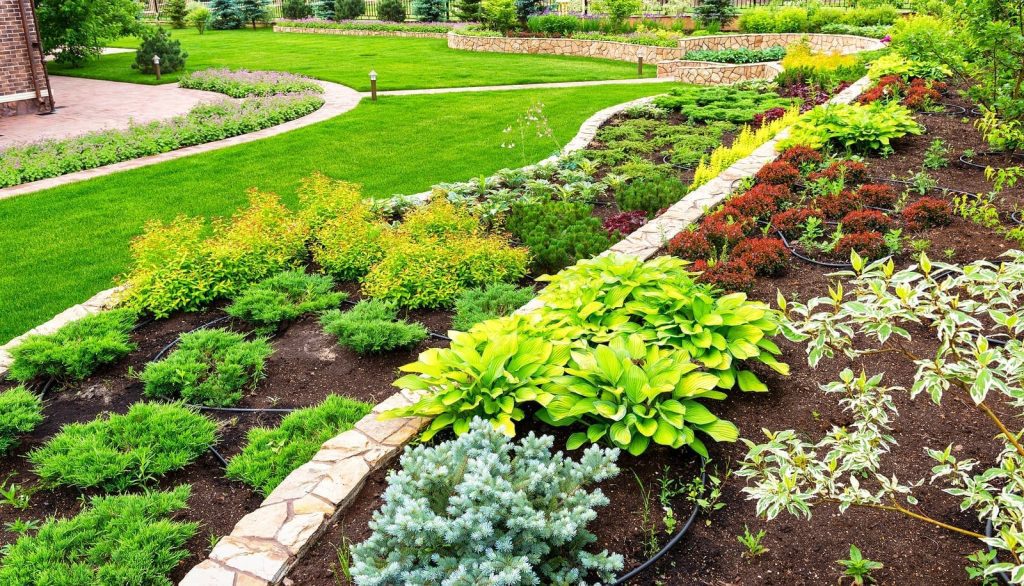How to Use Xeriscape Landscape Design to Get Your Yard Ready for Water Restrictions

Taking good care of your lawn during summer months can be challenging. This is where you should focus more on creating your landscaping design using xeriscape landscape design. The world xeriscape is made out of the combination of dry (xeros) and landscape. It is all about taking good care of your lawn during the drier months of the year. When it comes to xeriscape, you should learn how to take good care of your lawn with minimum resources such as water.
Understanding the water restrictions
Drought conditions is the main reason behind inadequate availability of water during summer months. Other causes for temporary water consumption restrictions include water main breaks and water tower issues.
A typical American household consumes more than 300 gallons of water per day, according to the EPA’s most current statistics. The typical household consumes 90 gallons of that for landscaping. This results in a weekly water use of 630 gallons. Restricting water consumption is done in order to save water for uses like drinking, toilet flushing, and battling fires.
Local and state governments impose water restrictions in order to save water. However, keep in mind that local governments may establish more restrictive policies in lieu of state laws. For instance, they might impose a restriction on when residents can water their lawns, despite the fact that the state water authority permits it every day of the week. Also keep in mind that water restrictions can become permanent in regions that experience drought often.
Getting started with Xeriscape design
Xeriscape design is one of the best options available to consider when you deal with lack of water. It is based upon seven important principles. Let’s take a quick look at what they are all about.
Planning and designing to conserve water
Conservation of water is the main objective behind Xeriscape design. This is where careful planning would come into play. For example, you will need to group the plants in your yard based on their water needs. You may also plant trees in the areas where you need more shade. It is better to use more of native plants, or plants that can conserve water. If you want to limit the areas that require water, you may consider hardscaping. Likewise, you should also understand how to place the water sprinkles strategically.
Improving the soil
You should add the right amount of nutrients to your soil and support the growth of plants. Drought-resistant and spongy soil would absorb water and provide a continuous supply of moisture to the plants. It is better if you can get in touch with a local garden shop and learn more about the soil enhancements that you would need. Then you can continue to make your soil better.
Group the plants
You should separate the plants that require more water from the plants that don’t require a lot of water. After this separation, you can plant them in different areas of your lawn. Then you will be able to provide more water only to the plants that require them. This tip will help you to conserve water effectively.
It is also better if you can take a look at the common trees and plants used in the Xeriscape design. This is where you need to reach out to a garden specialist and get some ideas.
Irrigate efficiently
Drip irrigation is the most recommended irrigation method available for you to consider in Xeriscape design. This is where you will be using a network of tubes to water the plants. Drip irrigation can help you to provide water right into the roots of your plants, while minimizing evaporation.
You can also think about using natural irrigation methods to get the most out of rainwater. This is where you should grade the yard, so that you can allow rainwater to spread effectively. If any of these options are not possible, you should locate the amount of water required by each cluster of plants. Then you can go ahead and provide water to them in measured quantities.
Always use correct mulches
With the help of both organic and inorganic mulch, you will be able to minimize evaporation by covering up the soil. This is something that you should focus more during Xeriscape design.
Organic mulch, such as wood chips are ideal to be used in smaller areas of your yard such as planting beds. You can use them for plants that require more water. On the other hand, inorganic mulch such as pebbles and rocks would work well on bigger areas. You can use them with the low-water plants and even to cover up the entire turf.
Stick to the right turf
Grass would require a lot of water to develop a healthier growth. This is where you need to be mindful about the placement of grass. For example, you must ensure that grass is planted in shaded areas. This will help you to overcome evaporation and even runoff.
Focus more on yard maintenance
Getting a water conserving landscape is not just enough for your yard. You will also need to pay attention to maintaining it. This is where you should take a look at the irrigation techniques and ensure they work optimally. Likewise, you must also add mulch and replace the plants available in your yard as needed.
Final words
Now you know how to conserve water and continue with having a great yard with Xeriscape. Adhere to these tips and make sure that you get the most out of limited resources available.
